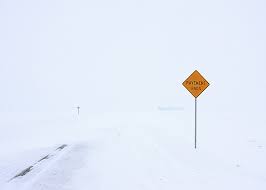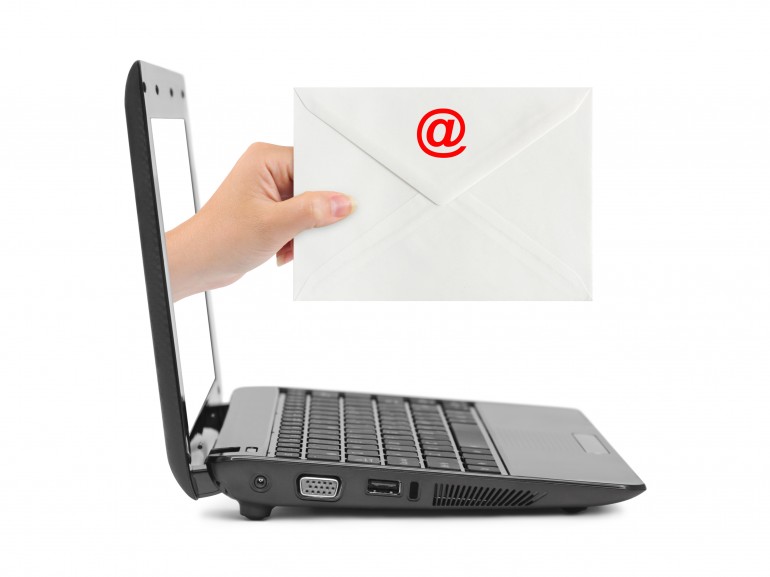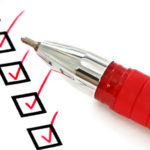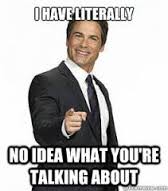Qualifying leads is probably the most difficult skill a salesperson must learn in their career. It is particularly difficult to do if you are new in sales or new in your industry. In order to properly qualify your leads, you must:
- ASK the right questions
- LISTEN to your customer
- BE CREATIVE

When I first started in sales, I made the mistake of blindly trusting anyone who suggested a lead to me. I can’t fault myself for my naivety. I mean, I was just an eager brand new sales rep. So whether I got a lead from upper management or by word of mouth through a referral, I quickly learned that you just never really know until you ask your potential customer some crucial questions and qualify them yourself.
I will share with you an example of a time when I failed to do so, and ended up in a less than ideal situation. My very first week on the road as a sales rep, I got led astray big time both literally and figuratively all because I didn’t know how to properly qualify my lead.
I was having a good meeting with a customer and she asked me “Are you planning on seeing Dr. X?”.
The name wasn’t familiar to me, so I thought that I must have missed that doctor in my database. I replied, “No, is Dr. X in this city? I don’t recall seeing their name in my database.”
She informed me that “Oh, you must stop by and see Dr. X. She would use all of the products you are selling and she is only a 10 minute drive away.”
To me that sounded like a win-win. I had some time to kill before I had to go to the airport, so why not try and get some new business and get working on that hot lead? After all, it was only 10 minutes away and it was a referral.
She proceeded to give me explicit directions and I was on my way. I must note that these directions were to drive along this highway for 20Km, make a right at a landmark and the clinic was just around the corner.
As I was driving on this prairie highway in the dead of winter, I was watching the odometer and 20km came and went. On this particular stretch of highway, there were no businesses, no side roads and certainly no exits. On top of that, the driving conditions quickly deteriorated into a complete whiteout. I was driving a sedan with no snow tires. Rental cars never have snow tires. The landmark that I was looking out for was a white horse. Try finding that on a flat prairie highway in the middle of a whiteout! I was starting to panic, especially since I had a flight to catch later that afternoon. My panic worsened when I saw a sign for the next town: It was over 300km away! “How on earth do I turn around and get out of here?!?” .
Finally after driving almost 60km and almost having a full blown panic attack, I finally saw the white horse landmark she mentioned. I was going to give her the benefit of the doubt thinking that she accidentally told me the distance in miles instead of kilometers (1 mile = 2.2km) but I don’t think the average person could drive 20 miles in less than 10 minutes! . So that was lie #1. When I saw this landmark, I was most relieved to finally see a road that I could take to TURN AROUND and go back. But instead of turning around, I figured that I had already gone this far and I’ve already passed the point of no return, so I drove on in pursuit of this “lead”.
After I make the turn, it’s another 5 minute drive until I find this clinic. Certainly not just around the corner! Lie #2.
Upon my arrival at the clinic, I greet the staff and get in to see the doctor. Lucky for a cold call! I mention Dr. Y recommended that I see her because she thought that she could use my products.
Well as it turned out, this doctor didn’t use any similar products and in discussing her practice in greater depth, I realized that there wasn’t even potential for her to use my products. Lie #3.
I was furious! Dr. Y. sent me all that way in a blizzard on a route that was 3x longer than what she told me and this doctor she referred me to didn’t even use anything remotely close to what I was selling. She totally sent me on a wild goose chase. I’m sure she was very amused. I was so angry that if I didn’t have to make that flight, I would have gone back to her clinic to blow a gasket on her. Not very professional I know, but I got quite scared on that drive and I just couldn’t believe that a professional would lead me astray like that just for fun. People lie to sales reps for a multitude of reasons but as you may have guessed, this particular individual just happened to be a tad more “off kilter” than the average person.
I later found out from other representatives who had called on this doctor, that she had been known to deliberately go out of her way to get reps into trouble. For instance, a few reps who used to call on her informed me that she would actually lock the door in front of them when they showed up for an appointment and then she would call their sales manager and tell them that they never showed for the appointment.
Although this lady was an exceptionally bad seed and it is extremely rare that professionals would act in this type of manner, this story is a great example of why you should not just blindly accept and follow any lead you receive without properly qualifying it first.
What did I do wrong?
You guessed it, I didn’t qualify this lead.
What should I have done?
A simple phone call to the clinic in advance would have saved me a lot of time and grief. Calling in advance of dropping in is not only a sign of respect for your potential future customer but also a great opportunity to qualify them as a potential buyer and decide if they are worthy of your time.
Some questions to help qualify your lead may be:
I hear your business does “X”, can you tell me a bit more about your business so I can see if there is a potential fit between what your company does and what our company has to offer?
Does your business currently use Product or Service X (a product or service that is similar to what you are selling)?
How often do you buy/use said product/service?
Who is normally involved in making the decisions to purchase this product/service?
When do you intend to purchase? It is essential to find out where they are in the buying process and is it a wish, a want or a need? This is very important.
If they don’t currently use a product or service similar to what you are selling, make sure to ask them more questions about the nature of their business to see if there is some way that they could find your product or service useful. Be creative! Think outside of the box. But sometimes, just like in my example, there may just not be a fit.
If you can manage to ask a few of these questions in an introductory phone call in order to ascertain if the lead is worthwhile pursuing, it will definitely pay off. If they are worthwhile pursuing, great, go for it! If not, you just saved a lot of time and effort which you could otherwise be spending focusing on clients who will actually buy from you.
In summary, qualifying isn’t easy. Sure you can learn some good probing questions in your sales/product training but until you really have a solid grasp of your industry, it isn’t always so intuitive.
Practice makes perfect and the more questions you ask, the more you learn.
Happy Sales!
 This is the most important line in your email since most emails are deleted without opening based on the subject line alone. Make it as succinct and relevant as possible to the reader.
This is the most important line in your email since most emails are deleted without opening based on the subject line alone. Make it as succinct and relevant as possible to the reader. In this section, in 1-2 sentences maximum, address the following:
In this section, in 1-2 sentences maximum, address the following: In 1-2 sentences (3 maximum), outline the purpose of your email. This can be a brief description of the business opportunity you wish to discuss. Do NOT be tempted to get into your sales pitch here! Simply address the following:
In 1-2 sentences (3 maximum), outline the purpose of your email. This can be a brief description of the business opportunity you wish to discuss. Do NOT be tempted to get into your sales pitch here! Simply address the following: Once again, limit this to ideally 1 sentence:
Once again, limit this to ideally 1 sentence:











